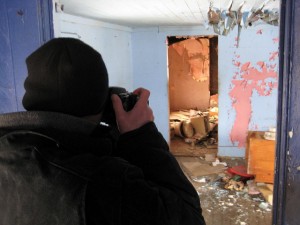 In a recent National Labor Relations Board (NLRB) case, Professional Electrical Contractors of Connecticut, Inc., 34-CA-071532, Administrative Law Judge (ALJ) Raymond P. Green found that some rules contained in the employee handbook, which prohibited employees from disclosing their location to third parties and from taking photographs or making recordings at their workplace, violated Section 8(a)(1) of the National Labor Relations Act (NLRA).
In a recent National Labor Relations Board (NLRB) case, Professional Electrical Contractors of Connecticut, Inc., 34-CA-071532, Administrative Law Judge (ALJ) Raymond P. Green found that some rules contained in the employee handbook, which prohibited employees from disclosing their location to third parties and from taking photographs or making recordings at their workplace, violated Section 8(a)(1) of the National Labor Relations Act (NLRA).
This section prohibits an employer to interfere with protected, concerted activity (PCA) as defined by Section 7 of the NLRA, that is, the exercise of employees’ rights “to self-organiz[e], to form, join, or assist labor organizations, to bargain collectively through representatives of their own choosing, and to engage in other concerted activities for the purpose of collective bargaining or other mutual aid or protection.”
In this case, employer was an electrical company and its employees spent most of their working days at clients’ sites. Employer argued that these rules aimed at protecting the privacy of its clients and testified that clients often prohibited pictures from being taken on their property without authorization.
No Disclosure of Location and Customer Telephone Number of Customer Assignment to Third Parties
The employee handbook stated that employees were forbidden to disclose the location and telephone number of their customer assignment to outsiders. It also stated that “[v]iolation of customer confidentiality may lead to discipline up to and including termination.” Maintaining such confidentiality prevented, according to the employee handbook, employees to “disclose customers’ information to outsiders, including other customers or third parties and members of one’s own family.”
The General Counsel argued that such prohibition could be interpreted by employees as barring Section 7 activities. Employer was arguing that the rule aimed at protecting customers’ confidentiality, as its employees spend most of their working hours at customer sites and thus may have access to information which must be protected.
ALJ Green found that the rule prohibiting to disclose a customer’s location was too broad and violated Section 7 of the NLRA. However, prohibiting disclosing a customer’s phone number did not violate the NLRA. ALJ Green noted that all employees had personal or professional cell phones and thus there was no need to disclose a customer’s phone number.
Information Technology Policy
The employee handbook also prohibited employees from sending communications or posting information, on or off duty, and to use personal computers in a way which may adversely affect their employer’s business interests or reputation.
ALJ Green found this rule invalid as too broad because it did not merely relate to employees communications made using computers owned by the employer, but also to communications made by employees using their personal computer.
Prohibiting Employees to Take Photographs or to Make Recordings at Their Workplace
The employee handbook also prohibited employees from taking photographs or making recordings at the workplace without prior authorization.
The General Counsel contended that this rule may reasonably be construed as prohibiting employees from photographing or recording Section 7 activities such as picketing or employee communications used in social media. The employer testified that the rule aimed at protecting customers ‘confidentiality and privacy.
ALJ Green cited a recent NLRB case, The Boeing Company case, 19-CA-90932 (May 15, 2014), where an ALJ found that a Boeing rule which prohibited employees to use personal camera-enabled violated Section 8(a)(1) of the NLRA. The Boeing rule allowed employees to carry camera-enabled devices on all company properties and locations “except as restricted by government regulation, contract requirements or by increased local security requirements,” but using these devices to take pictures or to tape a video was prohibited without authorization.
Boeing had argued that the rule was meant to protect the confidentiality of the manufacturing process. However, the ALJ was not convinced, noting that the areas designated as being camera-enabled devices-free were areas included VIP-tours of the plant, and such visitors were allowed to take pictures during the tours. The ALJ noted that “[Boeing]’s manufacturing process is no more in need of protection than an automobile assembly line.” The ALJ distinguished the facts in Boeing from the facts in the Flagstaff Medical Center case, where employers had forbidden employees to take pictures in order to protect hospital patients’ privacy. The ALJ concluded that Boeing’s no camera-enabled devices rule “reasonably discourages its employees from taking photos of protected concerted activities.”
In the Professional Electrical Contractors of Connecticut case, ALJ Green concluded that the rule prohibiting employees from taking photographs and videos at the workplace violated Section 8(a)(1) of the NLRA, and ordered the employee to rescind the language of its rules. This case is a reminder that, while a social media policy may contain language prohibiting employees from taking pictures in the workplace, the language of the policy must clearly indicate that the purpose of the rule is to protect the privacy of the third party whose photograph is taken.
Image is Taking pictures courtesy of Flickr user Greg Habermann under a CC BY 2.0 license



